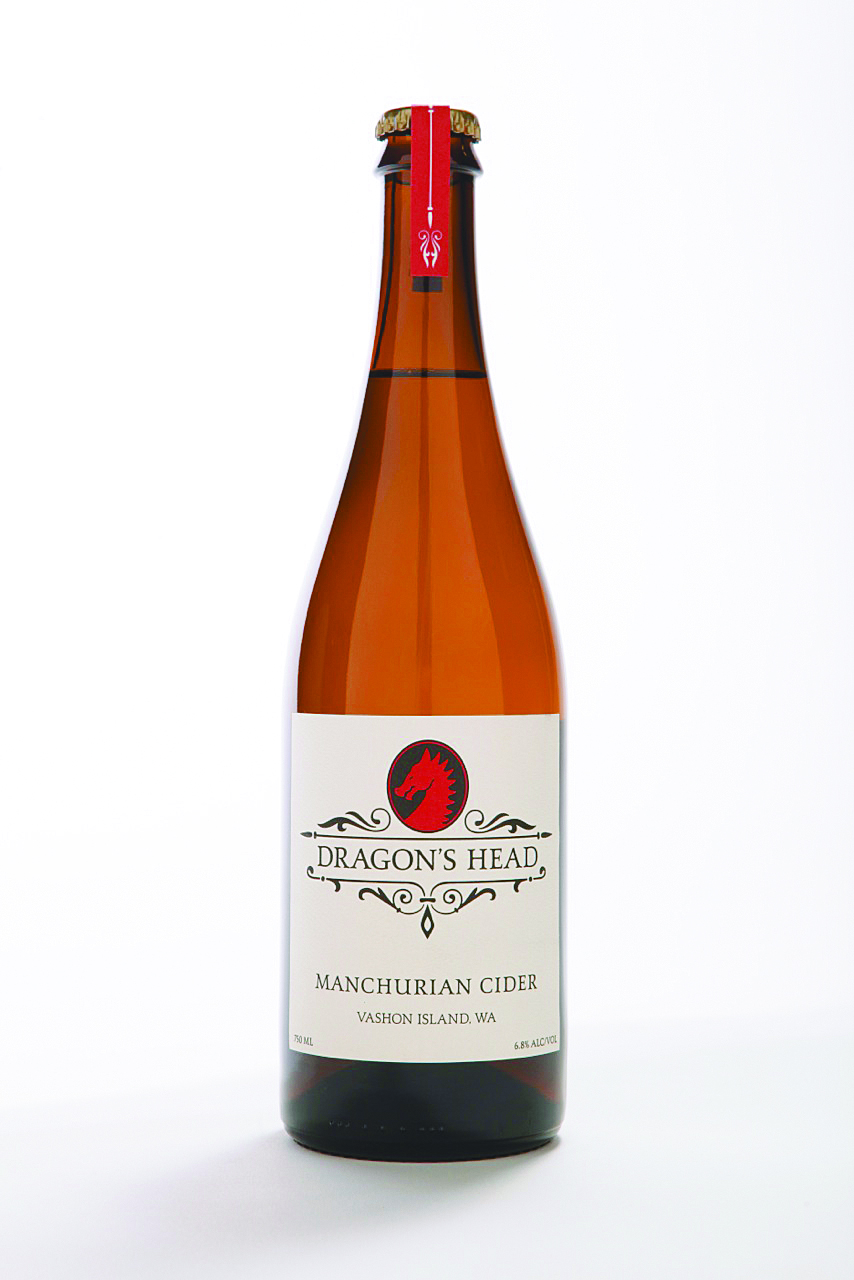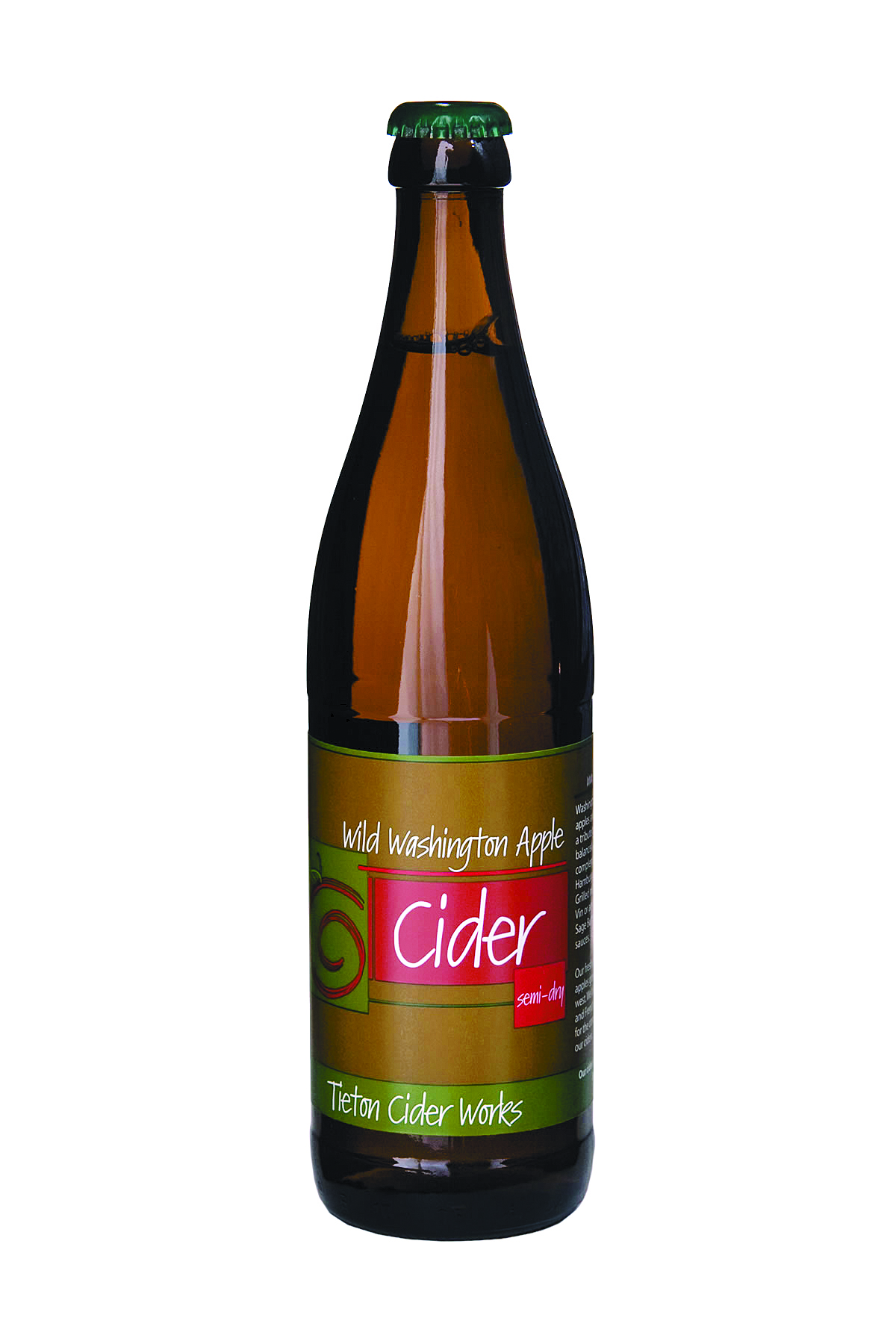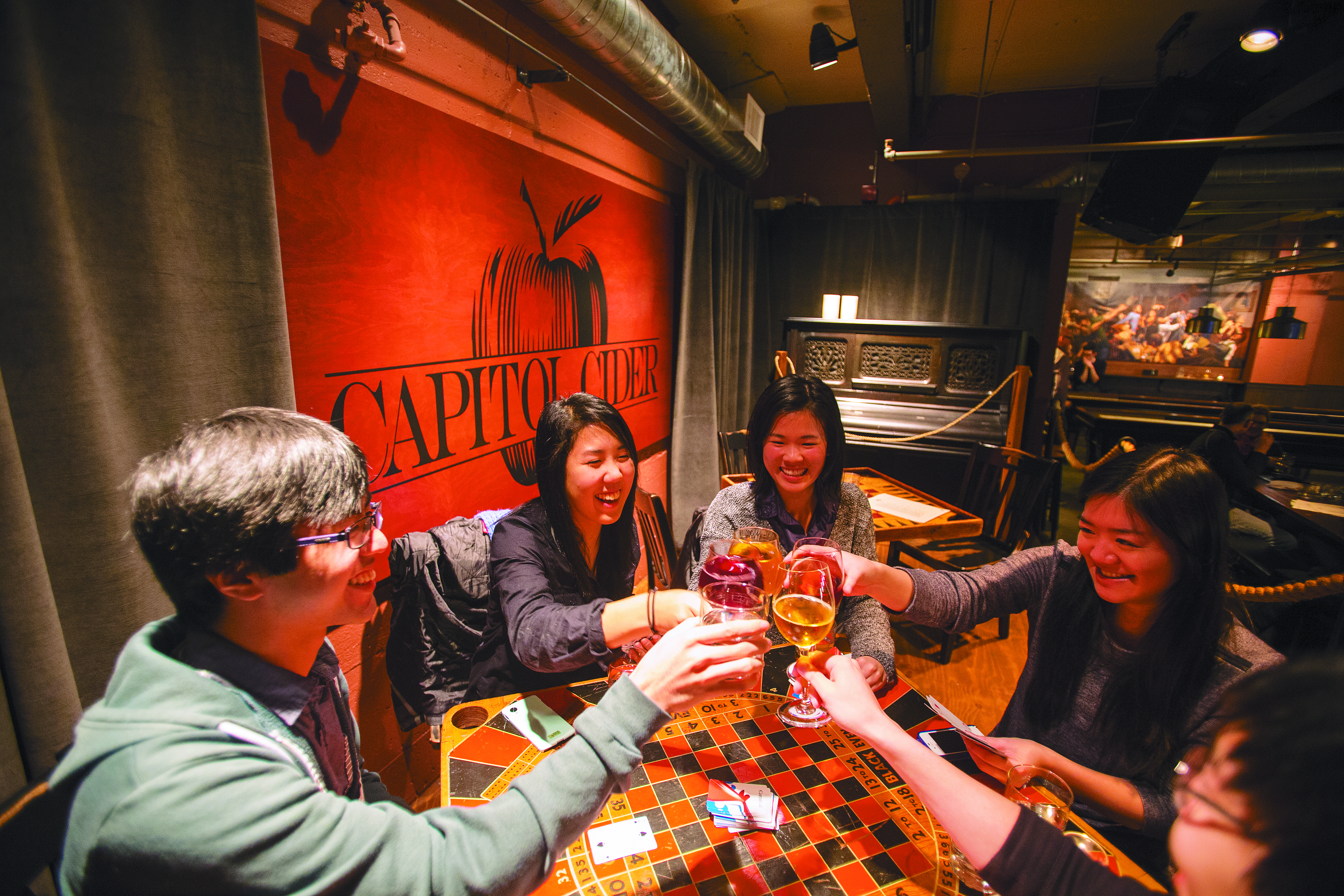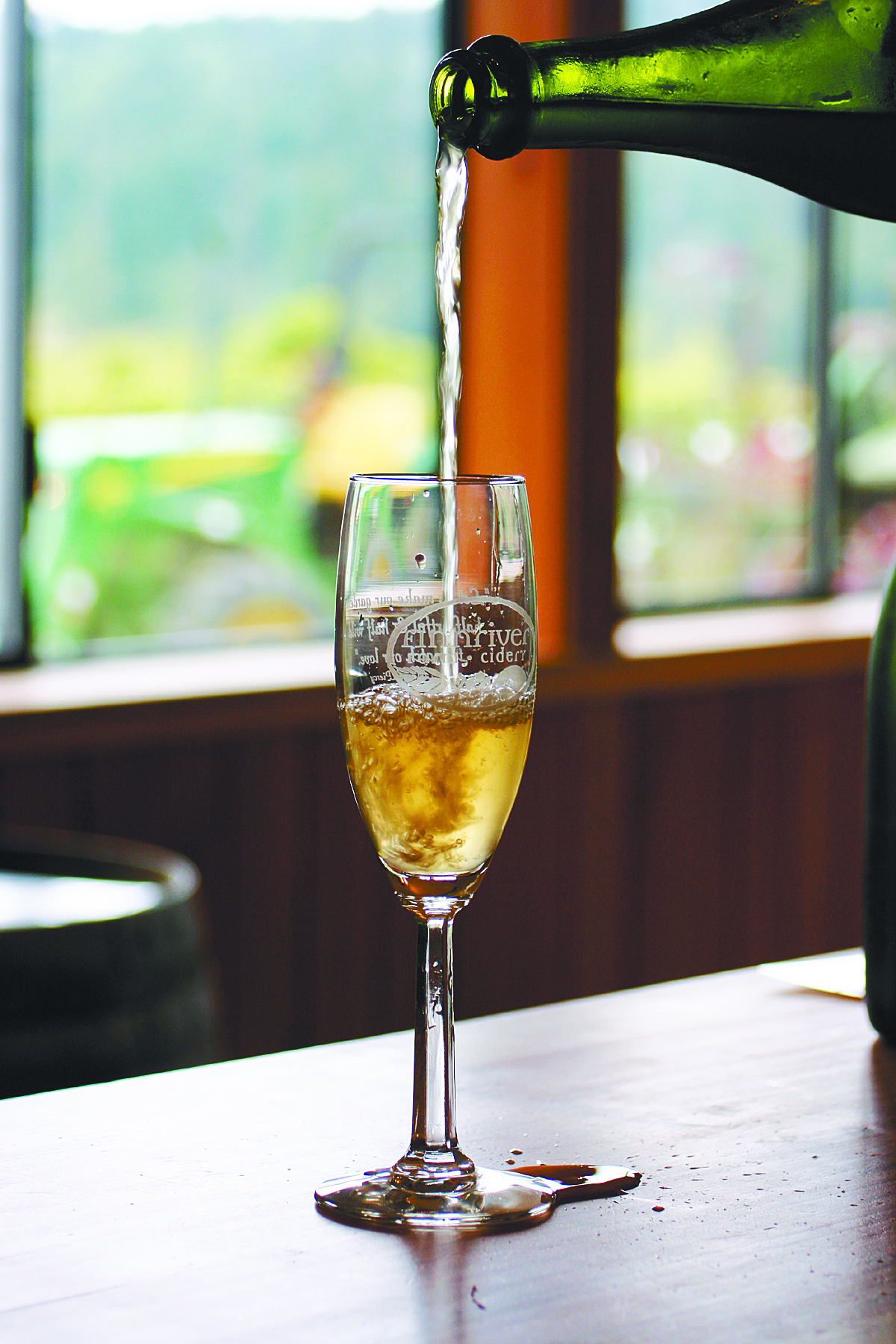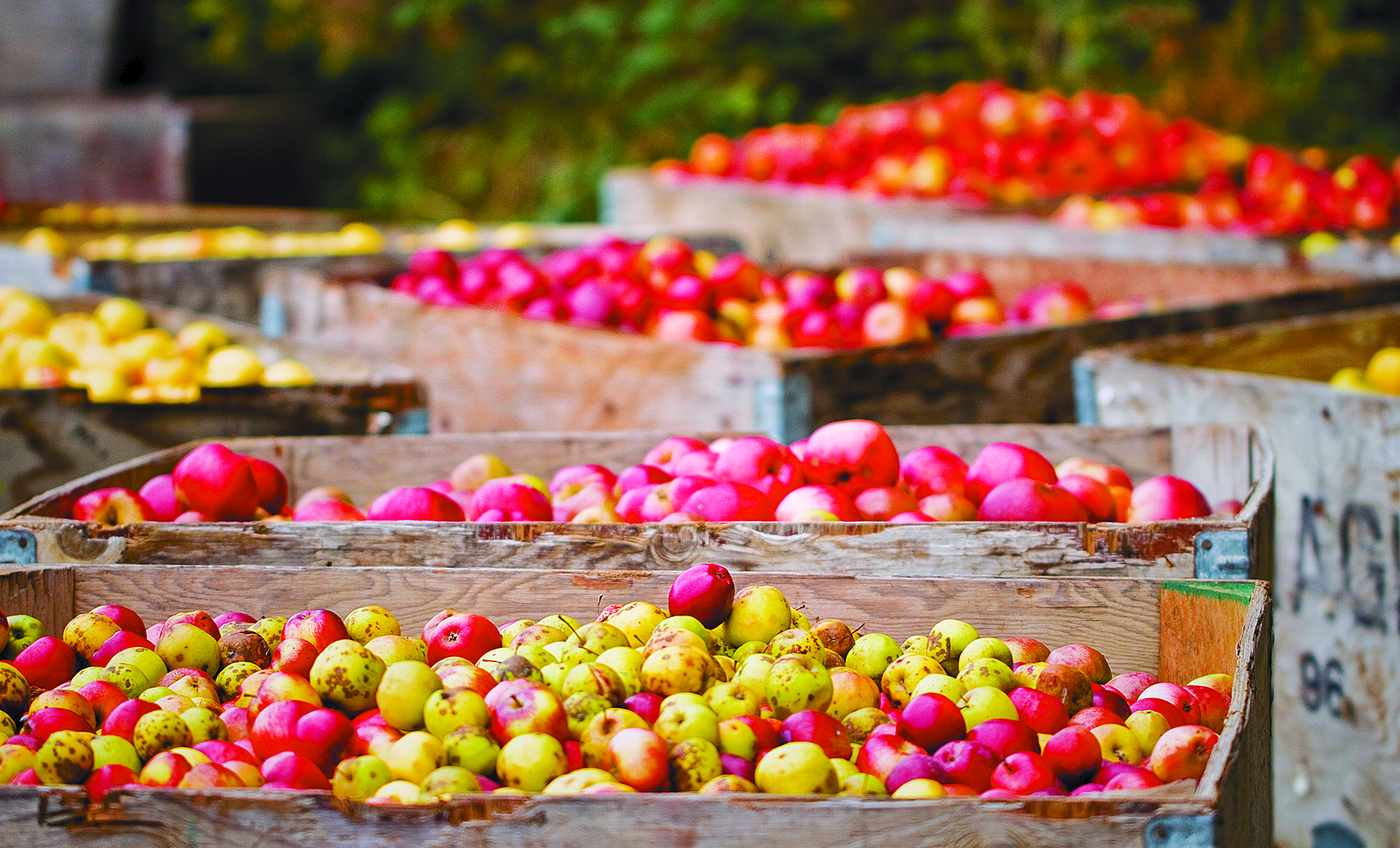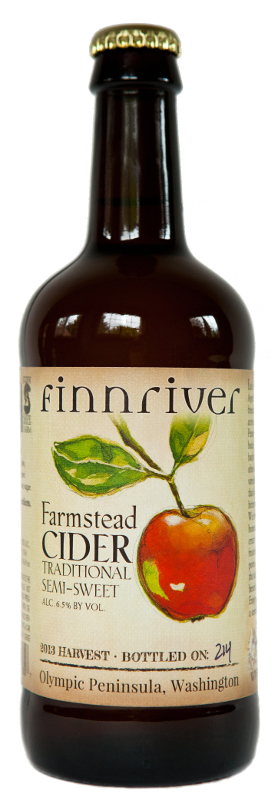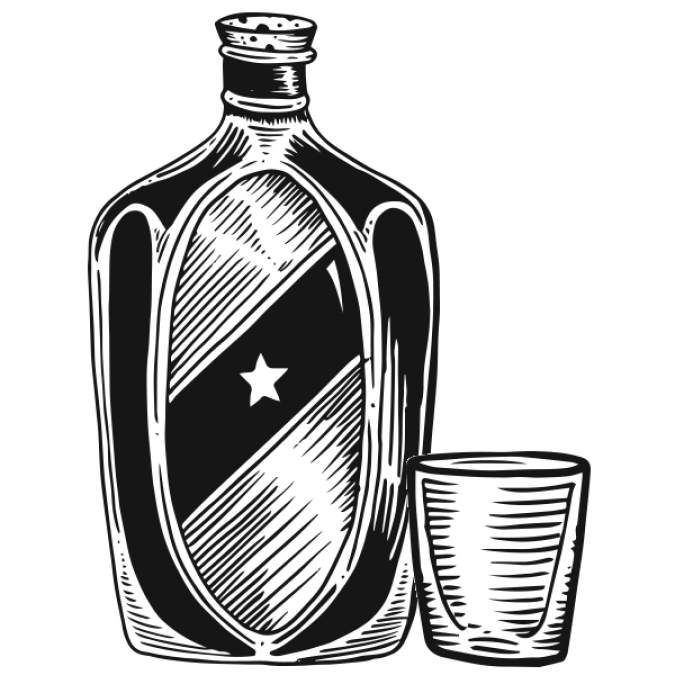Finnriver Cidery. Courtesy Finnriver Farm and Cidery
Remember the first hard cider you drank? If you aren’t quite young or exceptionally lucky, it was probably an unpleasant experience. For me it was a high-school party that turned me off it for years. Despite long being the drink of choice on the frontier, even when the frontier was east of the Mississippi, it ended up lumped in with other “non-serious” drinks like hard lemonade and wine coolers. Unless you happened to have a connection to get the few great French ciders that made it into the U.S., it was essentially impossible to find one that wasn’t sickeningly sweet and made from the cheapest ingredients possible. Now, a decade later, the demand for quality cider is so high that many Washington cideries are having trouble making enough to keep bottles on shelves.
How in the world did we get here, and what exactly does the future hold? “We have been amazed to watch the demand for cider grow,” says Crystie Kisler, co-founder of Finnriver Farm and Cidery. “When we started only five years ago, we had to do quite a bit of talking to get some folks to give our ciders a try. Now we are seeing more and more folks coming to Finnriver specifically for the cider experience and to see how and where we make it.”
What goes into a cider is actually a fascinating subject, rooted in American history as well as modern economics. The most significant event is the near-disappearance of cider apples, once the major product of American orchards. While the myth of Johnny Appleseed is widely known, what’s rarely discussed is that the apples he planted were almost exclusively meant to be turned into hard cider or applejack, the quintessential drinks of the American frontier. Those drinks, and the apple trees that made them possible, were prime targets of the temperance movement; as a result, most orchards were either cut down or converted into more palatable varieties, and many classic varieties were either lost forever or drastically limited in availability.
The effects of that loss are still felt. As Alan Shapiro, founder of the Seattle Cider Summit, explains, “One of the challenges is the amount of ‘proper’ cider apples available, as the acreage planted is very small compared to that for more commonly known apples. Plantings are increasing dramatically, but of course it does take some time for new plantings to yield to fruition, much like vines planted for grapes.”
Just as with wine, the cider fermentation process can be controlled to leave more or less residual sugar. Many classic European ciders have little or no sugar left in them, while the American palate has traditionally preferred more sweetness, or so conventional wisdom goes. Though most American ciders are made with at least some residual sugar, more and more producers are experimenting with truly dry ciders—and finding a market.
Sweetness is just one of the elements that differentiates ciders. The choice of apple is key too. Some producers are using conventional apples like Gravensteins and Macintoshes, while others take a more dubious path: buying apple-juice concentrate and fermenting it. As Julie Tall, owner of Capitol Cider on Capitol Hill, tells me, “You can tell the difference between people who are growing and pressing their own apples versus buying juice from China. Price point is usually a good guide; if it costs more, more went into it.”
Ciders served up at Capitol Cider. Courtesy Capitol Cider
Another workaround has come through infusing flavors into cider. Modern store shelves carry a dizzying array: everything from habaneros to hibiscus. “The practice of infusing flavors came about because we have so few cider varieties in the U.S.,” says Tell, “and it mirrored the infused-flavor trend [in] the adult-beverage industry. Now you’re seeing lots of hopping, as a part of the crossover between the cider world and the beer world.”
For now, cider seems to occupy a bit of a middle ground between beer and wine. For those who want a cold, crisp glass of something alcoholic, cider can be that. That it’s gluten-free doesn’t hurt: Everyone I talked to for this story acknowledged that the gluten-free craze has helped draw attention to cider. Yet cider can also be regarded like wine—a product of a very specific type of apple grown in a certain place and produced using traditional methods stretching back thousands of years. You’re starting to see cider show up alongside wine on some of the finest wine lists in the city, and its place in food pairing is only just now being appreciated in the sommelier community.
We certainly don’t seem to be anywhere near the end of the cider boom. Attendance at the Seattle Cider Summit has risen from around 400 people in 2010 to almost 4,000 this year, and new cideries seem to spring up almost monthly. Given the abundance of apples grown locally, it’s not hard to imagine Washington’s cider industry continuing to grow as the state’s wine and beer industries have. While Carrie Nation and the other leaders of the temperance movement would disapprove, cider has a long and fascinating history in America, one that is getting a long-overdue second act.
food@seattleweekly.com
Washington Ciders to TryInterested in exploring the world of Washington cider? Many cideries in the state are open to visitors at least a few days a week. As for taste-testing, here are a few favorites to consider. Most of these can be found in either local bars or specialty shops throughout Seattle.
Sweet and flavorful – Schilling Oak-Aged Cider The richness and sweetness of the barrel-aging brings an interesting dimension. – Finnriver Farmstead Cider Sweet without being cloying, it has quite a bit more nuance than most semi-sweet ciders.
Dry and crisp – Seattle Cider Co. Dry Cider Clean, crisp, and refreshing. – Dragon’s Head Cider Manchurian Cider Made from crab apples, it’s tart yet satisfying.
Unusual and interesting – Snowdrift Winter Red Like Champagne, this undergoes a secondary fermentation in the bottle, and is made from practically unknown varietals with bright-red flesh. – Finnriver Habanero Cider Definitely spicy, but fascinatingly complex. – Tieton Ciderworks Wild Washington Cider Made from wild apples, the flavors jump all over the place.
